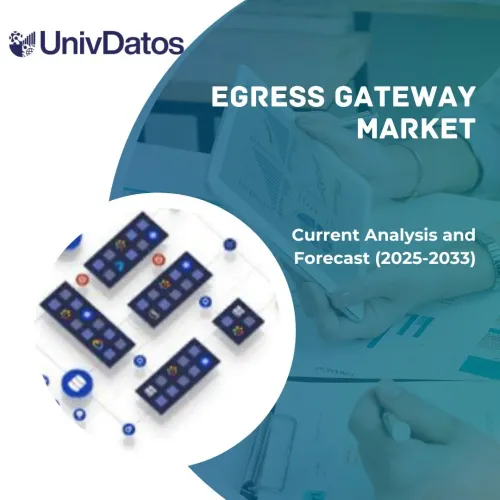通貨両替所ソフトウェア市場:現状分析と予測(2024年~2032年)
アプリケーションの重視(大企業および中小企業)、タイプ(クラウドベースおよびウェブベース)、地域/国
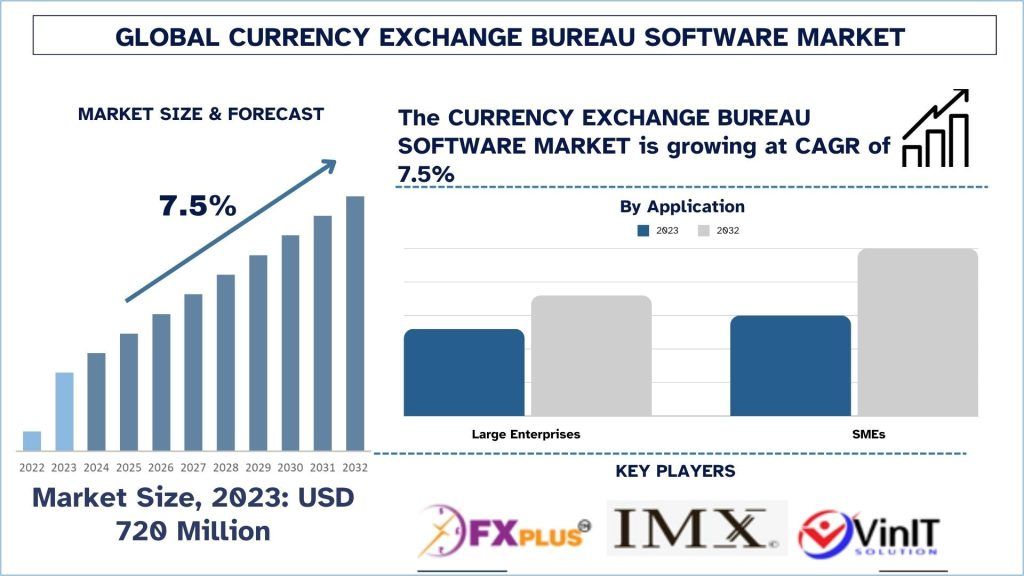 通貨両替所ソフトウェア市場規模と予測
通貨両替所ソフトウェア市場規模と予測
通貨両替所ソフトウェア市場は、予測期間中に年平均成長率(CAGR)7.5%で指数関数的に加速する有望な可能性を秘めています。規制環境に対する高い要求は、規制報告、AMLチェック、KYCプロセスに対処できるソフトウェアの必要性です。たとえば、FiservやNCR Corporationが提供するソリューションは、ユーザーが地域および国際的な法律を遵守できるコンプライアンスオプションで構成されています。さらに、AIや機械学習などの技術も通貨両替所ソフトウェアを進化させています。VeriFoneやTriton Systemsなどの企業は、優れた技術を使用してリスクを軽減し、機能性を向上させています。
通貨両替所ソフトウェア市場分析
通貨両替所ソフトウェア市場は、オフラインまたはオンラインベースの通貨両替店での使用専用に設計されたソフトウェア製品を扱う市場のセグメントです。これらのソフトウェアソリューションは、為替業務の管理、基準の管理と実装、顧客、およびレポート作成に役立ちます。
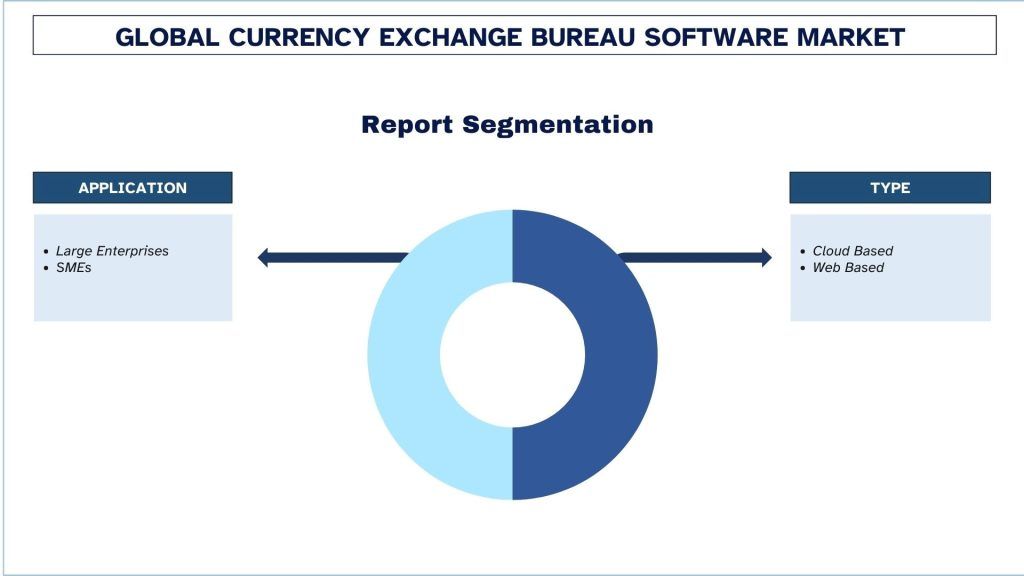
通貨両替所ソフトウェア市場のセグメンテーションに関する洞察
アプリケーションに基づくセグメントで、通貨両替所ソフトウェア市場を構成するものには、大企業と中小企業が含まれます。大企業セグメントは2023年に市場をリードしました。大企業とは、統合された通貨両替所ソフトウェアシステムに資金を投入するためにより多くのリソースを投入できる企業です。彼らは、厳格な運用上の要求に対応し、組織の発展に合わせて進化する高度に開発されたソフトウェアソリューションの実装に投資することができます。また、大企業はすでにIT構造とシステムを持っており、新しい通貨コンバーターソフトウェアと統合する必要があります。彼らは、ERPシステム、金融ポータル/プロセッサ、およびその他のエンタープライズアプリと簡単にインターフェースできるものを好みます。
タイプに基づいて、通貨両替所ソフトウェア市場は、クラウドベースとWebベースに分類されています。2023年には、クラウドベースのセグメントが通貨両替所ソフトウェア市場をリードしました。クラウドアプリケーションのその他の利点は、ソフトウェアの使用に関して、局の現在のビジネス要件への調整がより柔軟で簡単であることです。この柔軟性は、特に今日の市場環境では非常に有利になる可能性があり、運用上の変更がほぼ即座に行われる可能性があります。また、クラウドサービスプロバイダーはセキュリティ対策に特別な注意を払い、個々の両替局よりも多くのリソースを適用します。これにより、データ保護の信頼性と、GDPRまたは他のセクターの規範を含む法的仕様への適合性が保証されます。これは、金融サービス業界に特に関係があります。
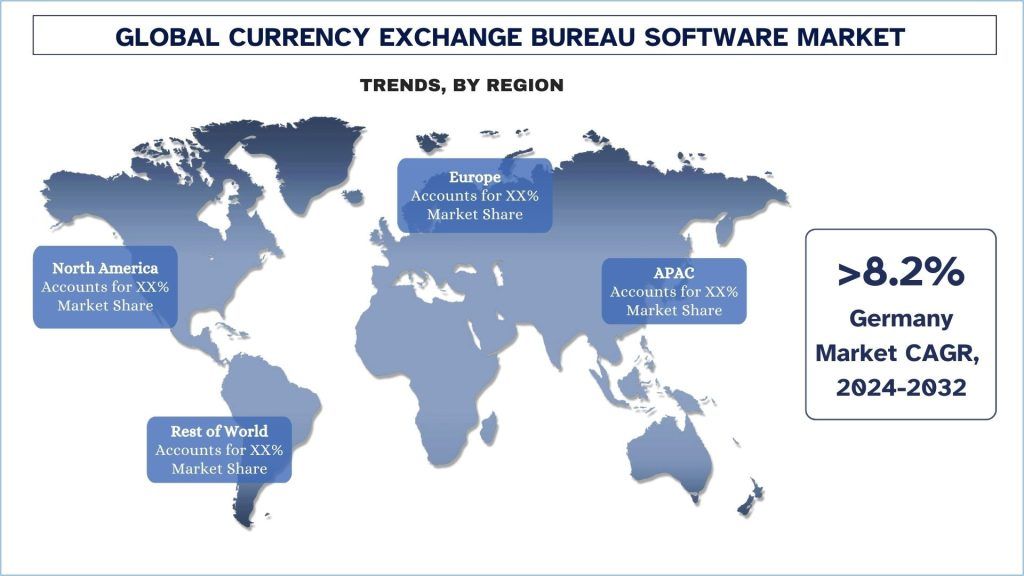
北米は2023年に市場の支配的なシェアを保持していました
北米、主に米国とカナダには、多くの外国為替局の代理店や金融機関に対応できる、十分に発達した金融サービス業界があります。このフレームワークは、組織の実践を改善するソフトウェアソリューションの利用を通じて効率を可能にします。さらに、北米の市場競争は、多くのプロバイダーによるソフトウェアソリューションの進歩を促進し、これにより洗練された通貨両替局のソフトウェアソリューションが作成されます。これは、この地域が効果的で安全なソフトウェアソリューションとサービスに対する大きな需要を持っているためです。たとえば、米国に拠点を置くNCR CorporationやFiservのような企業は、北米全体の金融機関の多様なニーズに応える包括的な通貨両替局のソフトウェアソリューションを提供しています。これらのソリューションには、コンプライアンス、セキュリティ、および運用効率のための高度な機能が装備されており、2023年の世界の通貨両替局ソフトウェア市場における北米の支配的な地位に貢献しています。
通貨両替所ソフトウェア業界の概要
通貨両替所ソフトウェア市場は競争が激しく、細分化されており、いくつかのグローバルおよび国際的な市場プレーヤーがいます。主要なプレーヤーは、パートナーシップ、契約、コラボレーション、新製品の発売、地理的な拡大、および合併と買収など、市場でのプレゼンスを高めるためにさまざまな成長戦略を採用しています。市場で活動している主要なプレーヤーは、Clear View Systems、Calyx Solutions、OnboarD Software、Cymonz、Donya Exchange、Medoc、Fourex、FX PLUS、IMX Software、およびVinitsolutionsです。
通貨両替所ソフトウェア市場ニュース
2022年末、米ドルは過去20年間で他の通貨に対して最高レベルに達し、FEDによる金利引き上げや不安定な世界経済など、いくつかの要因が影響を与えました。2023年に関しては、ドルにはかなりの変動がありますが、それでも以前の年よりも強くなっています。これは、「米ドルスマイル」という名前が示すように、米国の経済が強い場合、または世界経済が弱い場合にドルが良好なパフォーマンスを示すという事実を示すパターンがあります。
世界の国際通貨準備における米ドルのシェアは、時間の経過とともに減少しています。世界の中央銀行は、中国人民元、オーストラリアドル、カナダドルなど、米ドルやユーロなどの「伝統的な」準備通貨から移行しています。この傾向は、多様化とより良い利回りをもたらし、これらの通貨が提供します。
メキシコ、ブラジル、ペルーなどは、米ドルが国際市場で比較的強いにもかかわらず、通貨のパフォーマンスが良好です。これは、新興市場の中央銀行による金利引き上げに関するより多くの声明、資本流入の増加、さらにはより良い成長見通しによるものです。
通貨両替所ソフトウェア市場レポートのカバレッジ
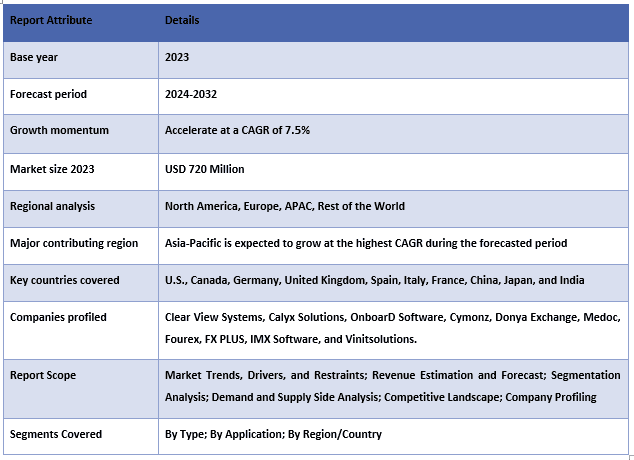
このレポートを購入する理由:
- この調査には、認証された主要な業界専門家によって検証された市場規模と予測分析が含まれています。
- レポートは、全体的な業界パフォーマンスを一目で簡単に確認できます。
- レポートは、主要なビジネス財務、製品ポートフォリオ、拡張戦略、および最近の開発に焦点を当てて、著名な業界の同業者の詳細な分析をカバーしています。
- 業界に存在する推進要因、制約、主要な傾向、および機会の詳細な調査。
- この調査では、さまざまなセグメントにわたる市場を包括的にカバーしています。
- 業界の地域レベルの分析を深く掘り下げます。
カスタマイズオプション:
グローバル通貨両替所ソフトウェア市場は、要件またはその他の市場セグメントごとにカスタマイズできます。これに加えて、UMIは、お客様が独自のビジネスニーズをお持ちであることを理解しています。したがって、お客様の要件に完全に適合するレポートを入手するには、お気軽にお問い合わせください。
目次
通貨両替所ソフトウェア市場分析(2024年~2032年)の調査方法
世界の通貨両替所ソフトウェア市場の過去の市場を分析し、現在の市場を推定し、将来の市場を予測することは、世界の主要地域における通貨両替所ソフトウェアの導入状況を作成し分析するために行われた3つの主要なステップでした。過去の市場数値を収集し、現在の市場規模を推定するために、徹底的な二次調査が実施されました。次に、これらの洞察を検証するために、多数の発見と仮定が考慮されました。さらに、世界の通貨両替所ソフトウェア市場のバリューチェーン全体にわたる業界の専門家との広範な一次インタビューも実施されました。一次インタビューを通じて市場数値を仮定し検証した後、完全な市場規模を予測するためにトップダウン/ボトムアップアプローチを採用しました。その後、市場の内訳とデータの三角測量方法を採用して、業界のセグメントとサブセグメントの市場規模を推定および分析しました。詳細な方法論は以下に説明します。
過去の市場規模の分析
ステップ1:二次ソースの詳細な調査:
年次報告書および財務諸表、業績プレゼンテーション、プレスリリースなどの企業内部ソース、およびジャーナル、ニュースおよび記事、政府刊行物、競合他社の刊行物、セクターレポート、サードパーティデータベース、その他の信頼できる刊行物などの外部ソースを通じて、通貨両替所ソフトウェア市場の過去の市場規模を取得するために、詳細な二次調査を実施しました。
ステップ2:市場セグメンテーション:
通貨両替所ソフトウェア市場の過去の市場規模を取得した後、主要地域のさまざまなセグメントおよびサブセグメントの過去の市場の洞察とシェアを収集するために、詳細な二次分析を実施しました。主要なセグメントは、タイプとアプリケーションとしてレポートに含まれています。さらに、全体的な導入状況を評価するために、国レベルの分析を実施しました。
ステップ3:要因分析:
さまざまなセグメントおよびサブセグメントの過去の市場規模を取得した後、通貨両替所ソフトウェア市場の現在の市場規模を推定するために、詳細な要因分析を実施しました。さらに、通貨両替所ソフトウェア市場のタイプやアプリケーションなどの従属変数と独立変数を使用して要因分析を実施しました。世界の通貨両替所ソフトウェア市場セクターにおけるトップパートナーシップ、合併および買収、事業拡大、製品発売を考慮して、需要と供給側のシナリオについて徹底的な分析を実施しました。
現在の市場規模の推定と予測
現在の市場規模:上記の3つのステップからの実行可能な洞察に基づいて、現在の市場規模、世界の通貨両替所ソフトウェア市場の主要なプレーヤー、およびセグメントの市場シェアに到達しました。必要なパーセンテージシェアの分割、および市場の内訳はすべて、上記の二次的アプローチを使用して決定され、一次インタビューを通じて検証されました。
推定と予測:市場の推定と予測については、ステークホルダーが利用できる推進要因とトレンド、制約、および機会を含むさまざまな要因に重みが割り当てられました。これらの要因を分析した後、関連する予測手法、すなわち、トップダウン/ボトムアップアプローチを適用して、世界中の主要市場におけるさまざまなセグメントおよびサブセグメントの2032年の市場予測に到達しました。市場規模の推定に採用された調査方法論は、次のことを包含します。
- 収益(米ドル)の面での業界の市場規模と、国内の主要市場全体での通貨両替所ソフトウェア市場の採用率
- 市場セグメントおよびサブセグメントのすべてのパーセンテージシェア、分割、および内訳
- 提供される製品の面で、世界の通貨両替所ソフトウェア市場の主要なプレーヤー。また、急速に成長する市場で競争するためにこれらのプレーヤーが採用した成長戦略
市場規模とシェアの検証
一次調査:主要地域全体のトップレベルのエグゼクティブ(CXO/VP、営業責任者、マーケティング責任者、オペレーション責任者、地域責任者、国責任者など)を含むキーオピニオンリーダー(KOL)との詳細なインタビューを実施しました。次に、一次調査の結果を要約し、統計分析を実行して、述べられた仮説を証明しました。一次調査からのインプットは二次的調査結果と統合され、それにより情報が実行可能な洞察に変わりました。
さまざまな地域における一次参加者の分割
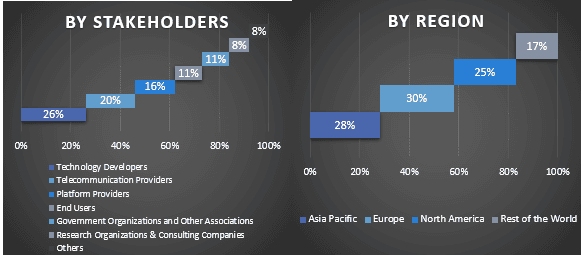
市場エンジニアリング
データ三角測量手法を採用して、全体的な市場推定を完了し、世界の通貨両替所ソフトウェア市場の各セグメントおよびサブセグメントの正確な統計数値に到達しました。世界の通貨両替所ソフトウェア市場におけるタイプおよびアプリケーションの分野におけるさまざまなパラメーターとトレンドを調査した後、データをいくつかのセグメントとサブセグメントに分割しました。
世界の通貨両替所ソフトウェア市場調査の主な目的
世界の通貨両替所ソフトウェア市場の現在および将来の市場トレンドは、調査で正確に指摘されました。投資家は、調査で実施された定性的および定量的分析に基づいて、投資の判断の基礎となる戦略的な洞察を得ることができます。現在および将来の市場トレンドは、地域レベルでの市場全体の魅力を決定し、産業参加者が未開発の市場を活用して先行者利益を得るためのプラットフォームを提供します。調査のその他の定量的な目標には、次のものがあります。
- 金額(米ドル)の面で、通貨両替所ソフトウェア市場の現在および予測市場規模を分析します。また、さまざまなセグメントおよびサブセグメントの現在および予測市場規模を分析します。
- 調査のセグメントには、タイプおよびアプリケーションの分野が含まれます。
- 通貨両替所ソフトウェアの規制フレームワークの定義と分析
- さまざまな仲介業者の存在に伴うバリューチェーンを分析するとともに、業界の顧客および競合他社の行動を分析します。
- 主要地域の通貨両替所ソフトウェア市場の現在および予測市場規模を分析します。
- レポートで調査された地域の主要国には、アジア太平洋、ヨーロッパ、北米、および世界のその他の地域が含まれます。
- 通貨両替所ソフトウェア市場の企業プロファイルと、急速に成長する市場で維持するために市場プレーヤーが採用した成長戦略
- 業界の詳細な地域レベルの分析。
よくある質問 よくある質問
Q1: 通貨両替所ソフトウェア市場の現在の市場規模と成長の可能性は何ですか?
Q2: 通貨両替局ソフトウェア市場の成長を促進する要因は何ですか?
Q3:アプリケーション別で、通貨両替局ソフトウェア市場において最大のシェアを占めるセグメントはどれですか?
Q4: 通貨両替局ソフトウェア市場における新たなテクノロジーとトレンドは何ですか?
Q5:どの地域が通貨両替局ソフトウェア市場を支配するでしょうか?
関連 レポート
この商品を購入したお客様はこれも購入しました








